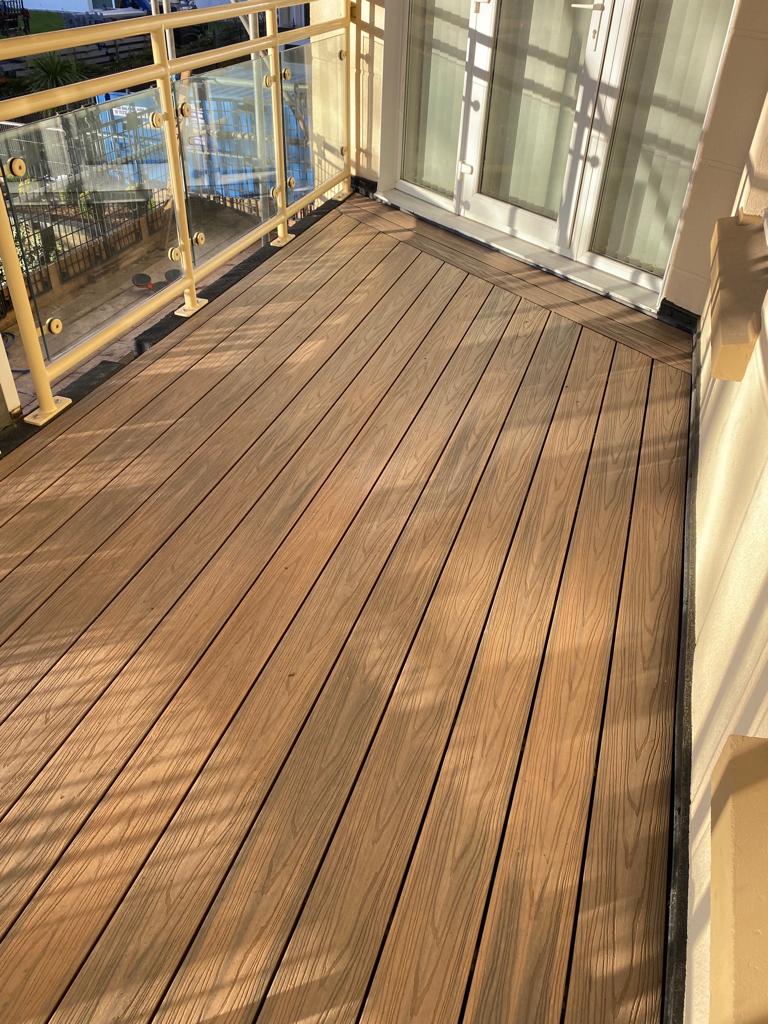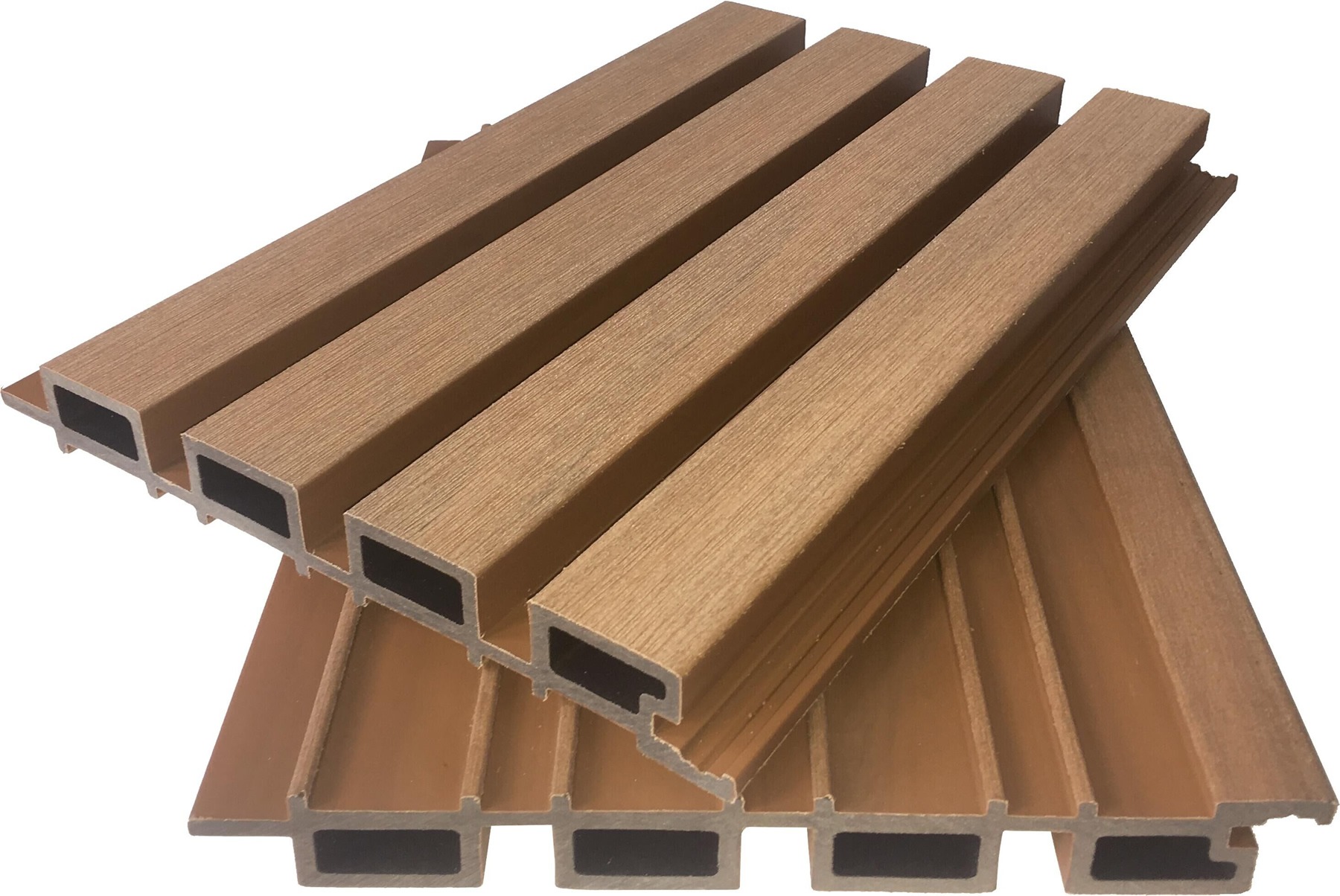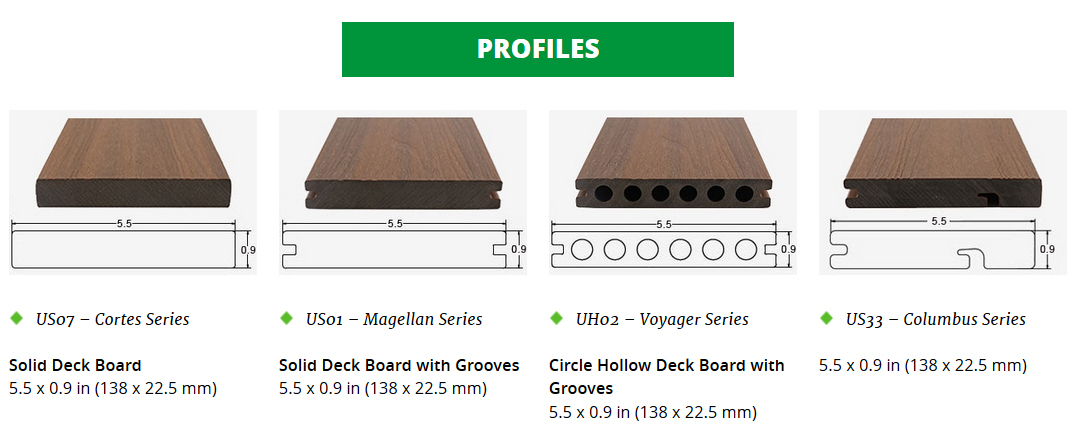Understanding Composite Decking Width: A Comprehensive Guide
Structural Composition of Modern Composite Decking
Composite decking represents an engineered flooring solution comprising multiple functional layers:
- Wear-resistant surface layer: Utilizes advanced polymer coatings for UV protection and scratch resistance
- Decorative layer: High-definition photographic replication of natural wood grains or stone textures
- Stabilizing core: High-density fiberboard (HDF) or mineral-reinforced composite for dimensional stability
- Moisture barrier: Integrated waterproofing technology in premium products
Industry-Standard Composite Decking Widths
Narrow Profile (90-120mm)
Ideal for urban apartments and compact commercial spaces, these dimensions:
- Enhance perceived spatial volume through linear visual effects
- Reduce material waste in complex layouts
- Maintain 87% market preference in European metro areas
Medium Width (150-200mm)
The emerging standard for residential applications offering:
- Optimal balance between modern aesthetics and structural integrity
- 15% faster installation versus narrow boards
- Enhanced thermal stability across seasonal variations
Wide Format (250-300mm)
Premium choice for luxury installations featuring:
- 75% reduction in visible seams for seamless appearance
- Improved load distribution for commercial foot traffic
- 34% annual growth in high-end residential projects
Strategic Selection Criteria for Decking Width
Spatial Dynamics
Implement these proportional guidelines:
| Room Size (m²) | Recommended Width |
|---|---|
| <20 | 90-120mm |
| 20-40 | 150-180mm |
| >40 | 200-300mm |
Architectural Harmony
- Modern minimalist: 150-180mm with micro-bevel edges
- Industrial chic: 200-250mm with brushed textures
- Traditional revival: 120-150mm with hand-scraped finishes
Current Market Trends and Future Projections
The global composite decking market (valued at $3.2B in 2023) shows distinct width preferences:
- 45% of new installations utilize 150-180mm boards
- 30% growth in ultra-wide (300mm+) commercial applications
- Emerging variable-width systems for customized patterns
Industry leaders like Plastory now offer AI-powered width recommendation tools for optimal spatial solutions.
Installation and Maintenance Considerations
Width-Specific Best Practices:
- Narrow boards: 1.5mm expansion gaps for thermal movement
- Wide planks: 3mm gaps with specialized T-clip systems
- Always consult manufacturer specifications for width-specific requirements
Environmental Impact Analysis
Recent lifecycle assessments reveal:
- Wider boards (200mm+) reduce material waste by 18% during production
- Narrow formats enable 22% better utilization in curved layouts
- All widths exceed 95% recyclability in modern composite formulations
Expert Insight
“The optimal decking width balances spatial perception, functional requirements, and aesthetic goals. We recommend 180mm as the versatile choice for most residential applications, offering modern appeal without compromising practicality.”
– Dr. Emily Zhang, Materials Scientist at Plastory R&D Center
Final Considerations
When selecting composite decking width:
- Analyze room dimensions and traffic patterns
- Align with architectural design language
- Evaluate lifecycle costs vs. initial investment
- Verify manufacturer certifications (ISO 14001, FloorScore®)
For personalized recommendations, consult Plastory’s technical team or use their online configuration tool.



